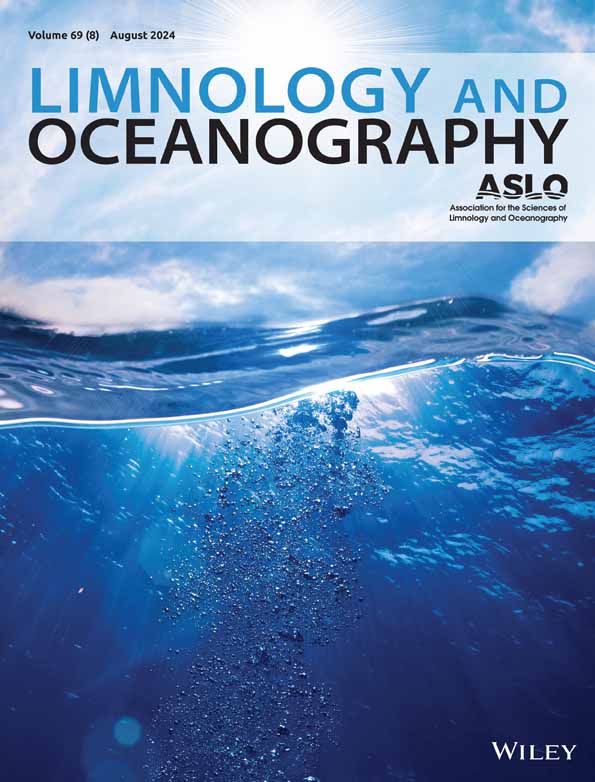格陵兰亚北极湖泊和溪流自养生物膜生物量和群落组成的环境控制
IF 3.7
1区 地球科学
Q1 LIMNOLOGY
引用次数: 0
摘要
光合生物膜是北极淡水生态系统的关键组成部分,支持初级生产并形成水生食物网的基础。虽然已知几个调节生物膜的环境因素,但它们在不同北极生态系统中的相对重要性及其与集水区特征的联系仍不清楚。本研究评估了南格陵兰Narsaq附近湖泊和溪流的鳞生物膜生物量和自养群落组成。湖泊生物膜以蓝藻为主,自养生物量与流域绿度和水电导率呈正相关。在溪流中,生物膜主要由硅藻和绿藻组成,自养生物量与磷酸盐、pH值和温度有关。湖泊中总生物膜生物量也与流域绿化率和电导率有关,而河流生物量没有一致的环境驱动因素。这些发现强调了环境对生物膜结构的控制在活体和活体系统之间是如何不同的。由于气候变暖加剧了冻土带的绿化并改变了营养状况,自养生物膜的生物量可能会增加,从而潜在地影响北极淡水生态系统的食物网动态和碳循环。我们的发现促进了对北极淡水生物膜动力学及其对气候驱动变化的敏感性的理解。本文章由计算机程序翻译,如有差异,请以英文原文为准。
Environmental controls of autotrophic biofilm biomass and community composition in subarctic lakes and streams in Greenland
Photosynthetic biofilms are key components of Arctic freshwater ecosystems, supporting primary production and forming the base of aquatic food webs. While several environmental factors regulating biofilms are known, their relative importance and connection to catchment characteristics across different Arctic ecosystems remain unclear. This study assessed epilithic biofilm biomass and autotrophic community composition in lakes and streams near Narsaq, South Greenland. Lake biofilms were dominated by cyanobacteria, with autotrophic biomass positively associated with catchment greenness and water conductivity. In streams, biofilms primarily comprised diatoms and green algae, with autotrophic biomass linked to phosphate, pH, and temperature. Total biofilm biomass in lakes was also related to catchment greenness and conductivity, while no consistent environmental drivers were found for stream biomass. These findings underscore how environmental controls on biofilm structure differ between lentic and lotic systems. As climate warming intensifies tundra greening and alters nutrient regimes, autotrophic biofilm biomass is likely to increase, potentially affecting food web dynamics and carbon cycling in Arctic freshwater ecosystems. Our findings advance the understanding of Arctic freshwater biofilm dynamics and their sensitivity to climate‐driven changes.
求助全文
通过发布文献求助,成功后即可免费获取论文全文。
去求助
来源期刊

Limnology and Oceanography
地学-海洋学
CiteScore
8.80
自引率
6.70%
发文量
254
审稿时长
3 months
期刊介绍:
Limnology and Oceanography (L&O; print ISSN 0024-3590, online ISSN 1939-5590) publishes original articles, including scholarly reviews, about all aspects of limnology and oceanography. The journal''s unifying theme is the understanding of aquatic systems. Submissions are judged on the originality of their data, interpretations, and ideas, and on the degree to which they can be generalized beyond the particular aquatic system examined. Laboratory and modeling studies must demonstrate relevance to field environments; typically this means that they are bolstered by substantial "real-world" data. Few purely theoretical or purely empirical papers are accepted for review.
 求助内容:
求助内容: 应助结果提醒方式:
应助结果提醒方式:


